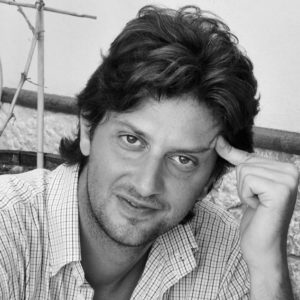The LIFE cycle of Listen, Interact, Form, Evolve: an actionable framework for co-evolution catalysts
I came back from Rome, last night, were I participated in the Warm Data Lab training led by Nora Bateson. It was one of those rare gamechanger events in my life, which questioned my ways of making sense and interacting with reality and gave me an opening to upgrade them. You will certainly hear from me about it later, but this story is about another highlight of my visit in Rome.

I met there Stelio Verzera, a free spirit and maverick Italian, a walking illustration of the meme that says, evolution is not something happening to us but through us and as us. I started paying attention to his work 3 years ago, when we, at “Enlivening Edge, republished his “Liquid Organisation: People Driven Disruption” video talk.
Stelio is the founder of Cocoon Pro that walks the talk on liquid organizations, and is the originator of the Ecosight model of catalysing co-evolution. The excerpt below is from his seminal article about it.
“Each of the 4 focuses, or phases, is a door in itself to key aspects of the reality of interbeing, and participates in the iterative evolution of the organization towards the exponential dynamics it can activate.
Here, listening means considering what the system is showing in terms of patterns, dynamics, leverages.
By interacting with them you actualize your current sensemaking generating new reality through the interplay with the system.
This reality gives you new learning, new forms to your thinking and structure, in-forming you.
And the evolution of your own identity through a changed sense-making closes the circle asking and allowing for a new level of listening.
All in all, the LIFE cycle brings in the lively carrier rhythm that is needed for coevolution to happen.”
The L-I-F-E cycle exemplifies how in the best, organic models, art and life intermingle. In Stelio’s sequencing, the art of systematically designing for emergence (not “designing emergence,” which is impossible, by definition) is a reflection of how co-evolution catalysts work naturally.
We listen to the system in-focus, in its various contexts; we interact with them; the parties trans-form by their interaction; and they evolve to the next level of their potential, thanks to their interactions.
It sounds deceptively simple, but the catch is in the appropriateness of such “intangibles” as the tone, attitude, and aesthetics of the interaction.
What I call an organic model is the opposite to the much-loved arbitrary models that are frequently developed for marginal differentiation among competing theories, cigarette brands, or consulting firms. “Try to develop models which are not arbitrary and man-made but organic and natural. The difference is in the intention. Arbitrary man-made models have as their intention manipulation and control. Natural, organic models have as their intention resonance and reverence.” — Margaret Mead
It is that resonance and reverence that I feel present in the Ecosight LIFE Cycle framework and that makes me trust and eager to more fully, more consciously engage with it in my work.
Needless to say that I’m thrilled by the possibility to host, next year, Stelio’s Ecosight course on Campus Co-Evolve and put our Educational Credo in service to more of our practitioners using that framework in catalysing co-evolution at all scales.
One more thing. If this article whetted your appetite and you don’t want to wait until the LIFE and Ecosight course comes to the Campus, you’ll have a chance to jump into an event largely inspired by it, in Madrid, Oct 18-20. Here are some of the reasons why you may think that your time will be well-spent there, not to mention to meet Stelio and his “co-conspirators”.
Share This Event!
About the Author: admin
